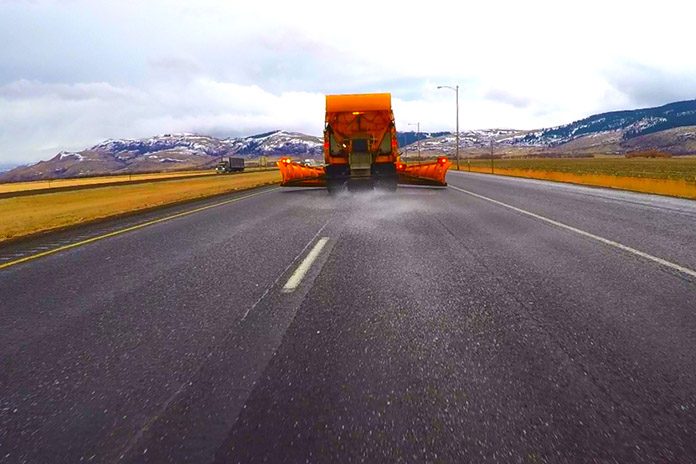Motorists expect to see slow moving plows and other winter maintenance equipment during and after storm events when snow and ice are present.
What some drivers may not know is that slow moving plow trucks are also often on the road prior to a storm, applying salt and/or deicer to help reduce the accumulation of ice and prevent snow from bonding to the pavement. Because salt needs to mix with moisture to activate, applying it on wet roads just before freezing temperatures is ideal.
“Travelers are advised to keep an eye out for slow moving winter maintenance equipment at all times,” said Luke Yeaton, District 13 Assistant Manager for the Oregon Department of Transportation (ODOT). “When you see a plow ahead of you slow down and stay several car lengths behind, especially when their warning lights and top roto beams are flashing. If there’s snow on the road the plow will likely be kicking up a lot of material that could limit visibility if you’re too close. If there’s no snow on the road, they may be applying salt, sand and/or deicer. Either way, give them extra room to do their job of helping to keep the highways as safe as possible.”
Salt is primarily used on the interstate between Boardman and the Idaho border when conditions warrant. To get it applied quickly and efficiently prior to a storm, ODOT trucks may be driving about 30 mph down the center of the freeway with plow blades partially lowered to keep motorists behind them from passing. Straddling both lanes allows a minimal amount of salt to be evenly spread across the pavement. The slow speed is needed to prevent the salt from bouncing off the road. If the surface is dry, crews may be adding a little liquid deicer to the salt to help it stick to the road.
“Without snow on the road, slow moving plows may be a confusing sight to some drivers,” Yeaton said. “We are not trying to block traffic, just applying salt and deicer before temperatures drop. Please be patient. Our drivers will pull over occasionally to allow everyone to pass. The result will be less ice forming on the road surface when it freezes and more efficient snow removal once the storm hits.”
ODOT recommends washing your vehicle regularly throughout the winter season, including the undercarriage to help remove salt, deicer and road grime residue. For more information about ODOT’s winter maintenance program, including application of salt and deicer contact Tom Strandberg @ 541-963-1330, thomas.m.strandberg@odot.state.or.us.










